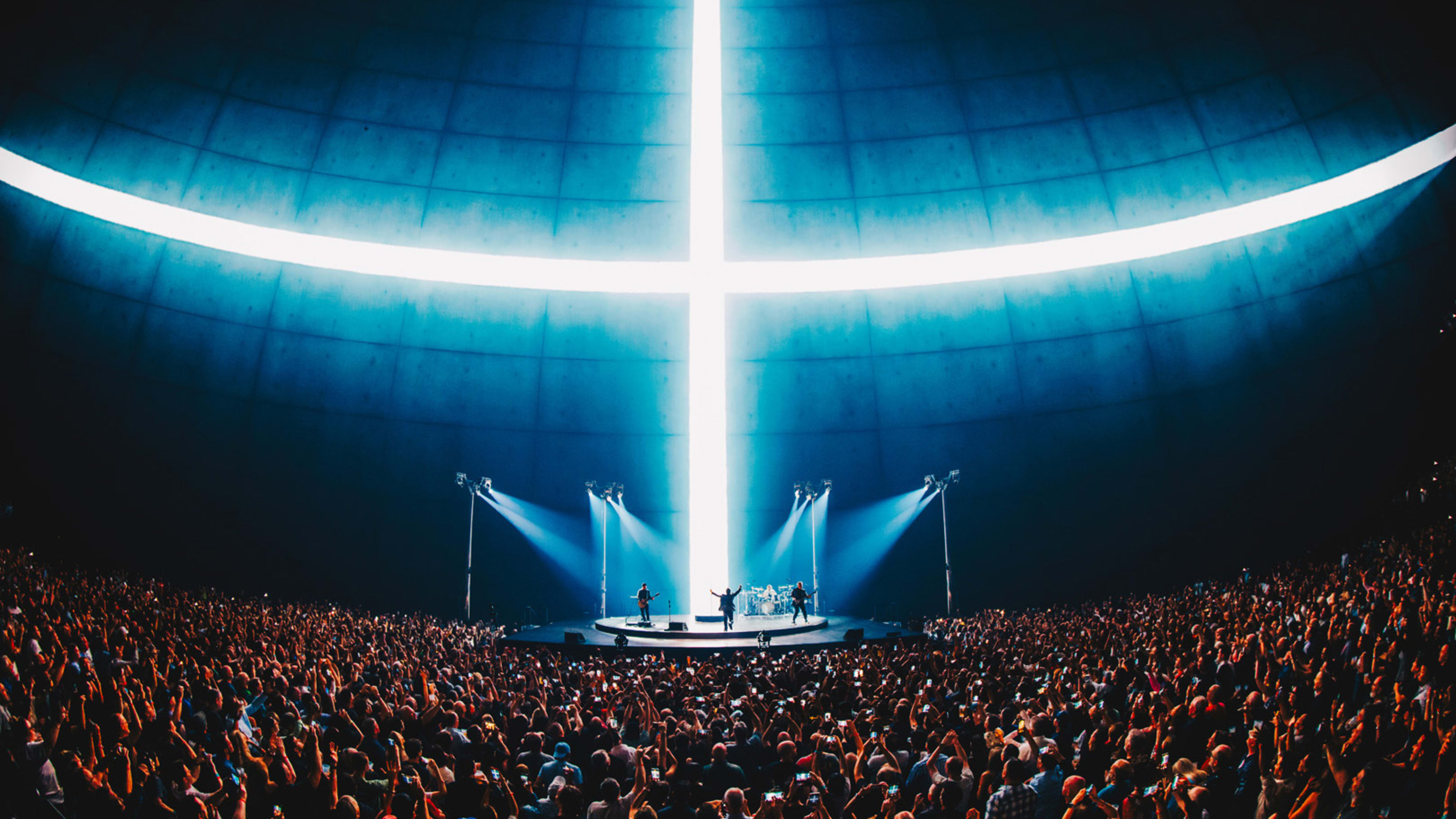It’s a Saturday night at the Las Vegas Sphere, and the crowd—more than 18,000 strong—is on its feet. Tom Hanks and Rita Wilson, arms aloft, look down from the VIP row and sway to the music. Ed Sheeran is there, too. Above and below them, a sea of camera phones is trained on the 160,000 square foot, 16k screen as the dazzling, crystal clear image of a pink sky comes into view. U2’s Bono is crouched, head bowed, waiting for his moment.
It’s time. The familiar and evocative arpeggios from Edge’s guitar puncture the stillness, launching the band into “Where The Streets Have No Name.” Beside me, in the 100-level section just above the general admission crowd on the floor, an older man wearing a blazer turns to the woman beside him and exclaims “Holy fucking shit!” He then turns back to the screen—the highest-resolution LED screen anywhere in the world, nestled inside the biggest spherical structure anywhere in the world—and begins to sing at the top of his lungs, along with everyone else, about how he wants to run, hide, and tear down the walls that hold him inside.

This anthem and the accompanying visuals are easily among the defining features of U2’s 36-night Sphere residency, U2:UV Achtung Baby, which started Sept. 29. The song’s grandiosity is the perfect complement to the stunning realism on display across the massive screen. As the music swells, 268 million pixels create the illusion of sunrise over a swoon-worthy desert vista. Thanks to Sphere’s 3D audio system that delivers a crisp, clean sound to every seat in the venue, it sounds like Bono is singing directly into your ear. After more than an hour of a dazzling light show and visual effects exploding across the screen—including a shower of fiery sparks and an ocean of stars, as well as a mind-bending kaleidoscope of Vegas- and desert- inspired imagery—“Where the Streets Have No Name” represents the apotheosis of U2’s and Sphere’s assault on your senses. It moved at least one person around me to tears.
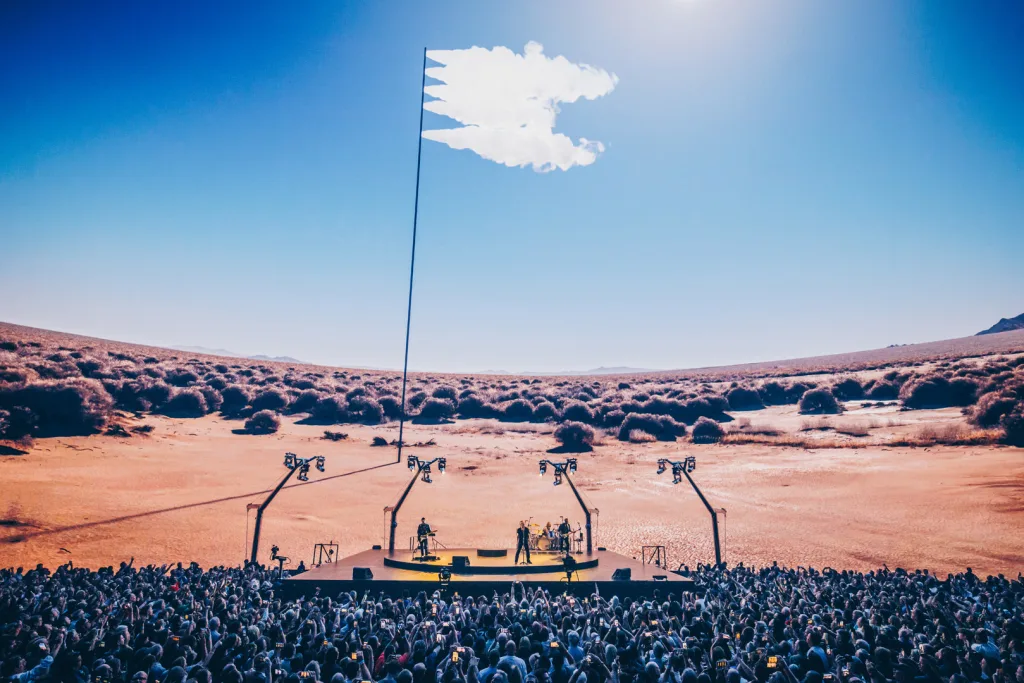
Suffice it to say: Nothing this preposterously expansive has ever been tried before in live entertainment, even if Bono jokes from the stage that “We haven’t changed a bit!” as he wears a rakish grin. Projected onto a screen that’s as long as four football fields and hovers 240 feet above the stage, Bono’s likeness takes on Biblical proportions as he speaks to the crowd.
The sheer scale of the space seems to leave even him, at times, in awe. On the opening night, there was one point when he seemed to be crying. Tonight, he muses aloud that Sphere is more or less a $2.3 billion “canvas for us artists to play with, to draw on.”

That’s certainly one way to describe it.
This hulking, illuminated orb sits to the east of the Venetian resort on the Las Vegas strip, the 580,000 square feet of LED screens wrapped around the outside lighting up the night sky with everything from an Xbox ad to a cute smiley face that winks, smirks, stares, and raises its eyebrows in shock.
It’s somehow both ridiculous and ridiculously cool, and you can’t help but feel like there’s something so Las Vegas about the fact that a giant yellow gumball of an emoji is now the most talked-about feature of the Sin City skyline. Patrons crane their necks and start snapping photos as soon as they step into the cavernous lobby, like tourists visiting New York City for the first time. Curious A-listers keep flocking to the Sphere, too, from Paul McCartney and Oprah to Lebron James, Matt Damon, Diplo, Jason Bateman, Snoop Dogg, and Bryan Cranston, among so many others.

As for the U2 residency, I’m sure the musicians are happy — if nothing else, it’s got everyone talking about U2 again, something that the band’s new album earlier this year didn’t even come close to achieving. You could argue that a band probably needs an ego the size of a planet to pull off a show like this, in a space like this. By staging its first live show since December 2019 at Sphere, it’s as if U2 is saying “No stadium or arena can contain us anymore.” Between that, as I talk to Stefaan “Smasher” Desmedt, U2’s longtime technical and video director, I wonder whether expectations have now been calibrated so staggeringly high that it creates an even bigger challenge for whoever comes to the Sphere next.
“Nothing is easy about this entire project,” Smasher tells me after the Oct. 21 show. “You’re talking about a 16k screen, so the amount of data we need to handle is something I’ve never dealt with on a scale like this.”
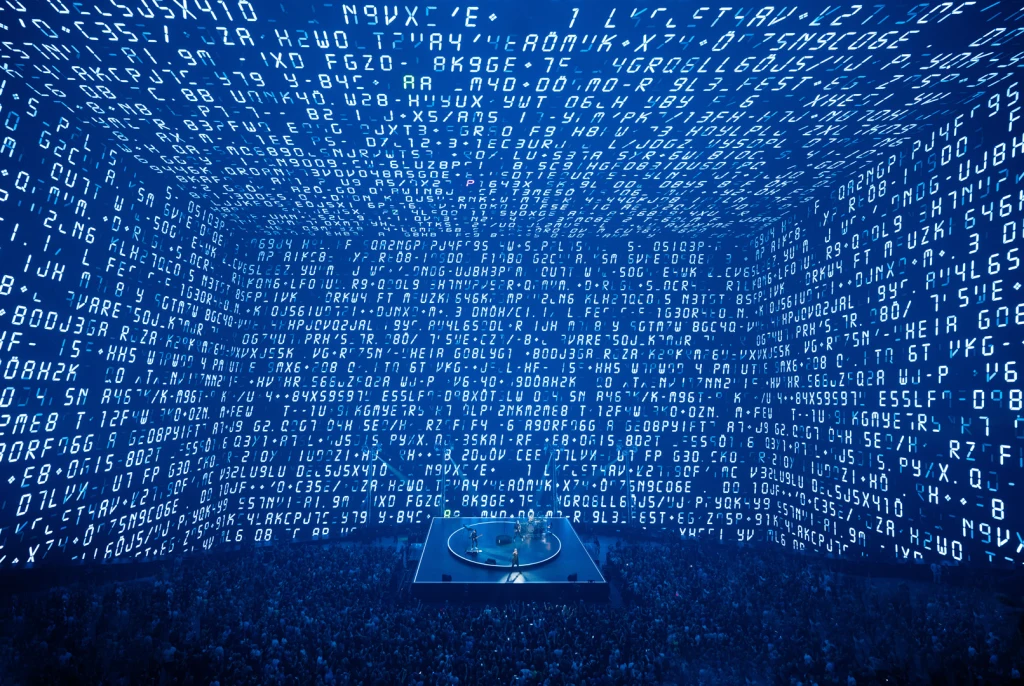
Though a challenge, he says playing at Sphere presented the opportunity to raise the stakes — creatively, visually, and sonically. In the past, Smasher tells me U2’s shows relied on 4K video content, but what’s happening at the Sphere goes way beyond that, into “uncharted territory,” he says. The screen, for example, requires U2’s team to move 200 to 300 gigabytes of data every minute. The tech team also had to migrate more than 500 terabytes of archival video footage rendered in the UK to the venue’s servers in Las Vegas.
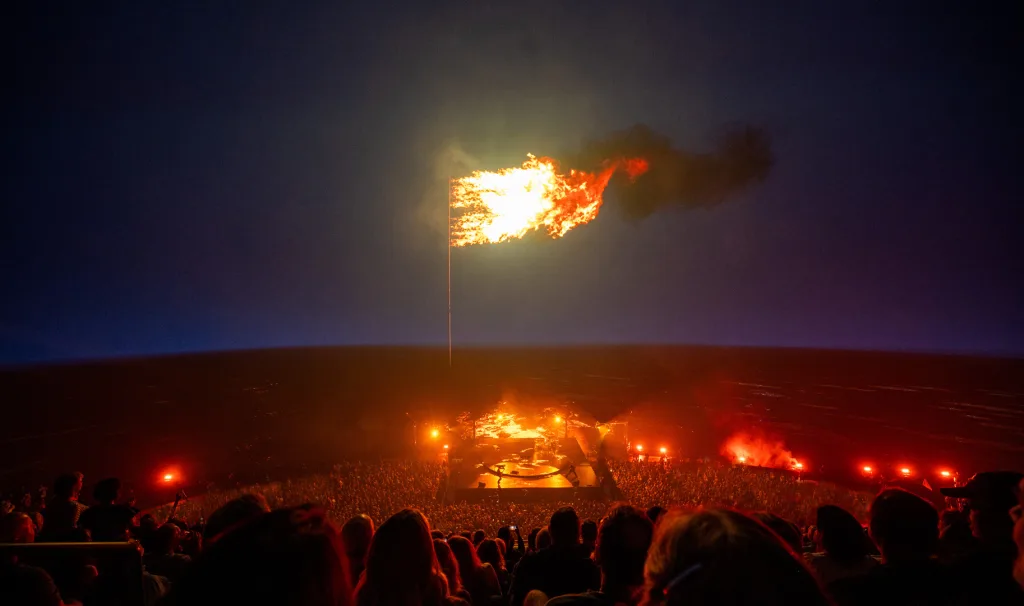
Making that possible is Weka, U2’s technology partner for the Sphere residency, whose platform allows for the storing, managing and archiving of very large volumes of data. Weka president Jonathan Martin explains that normally, video is rendered in 2k or 4k, then upscaled to maybe 8k, whereas everything concertgoers see during the U2 show was both built and rendered in 16k — “truly a landmark moment,” he says.
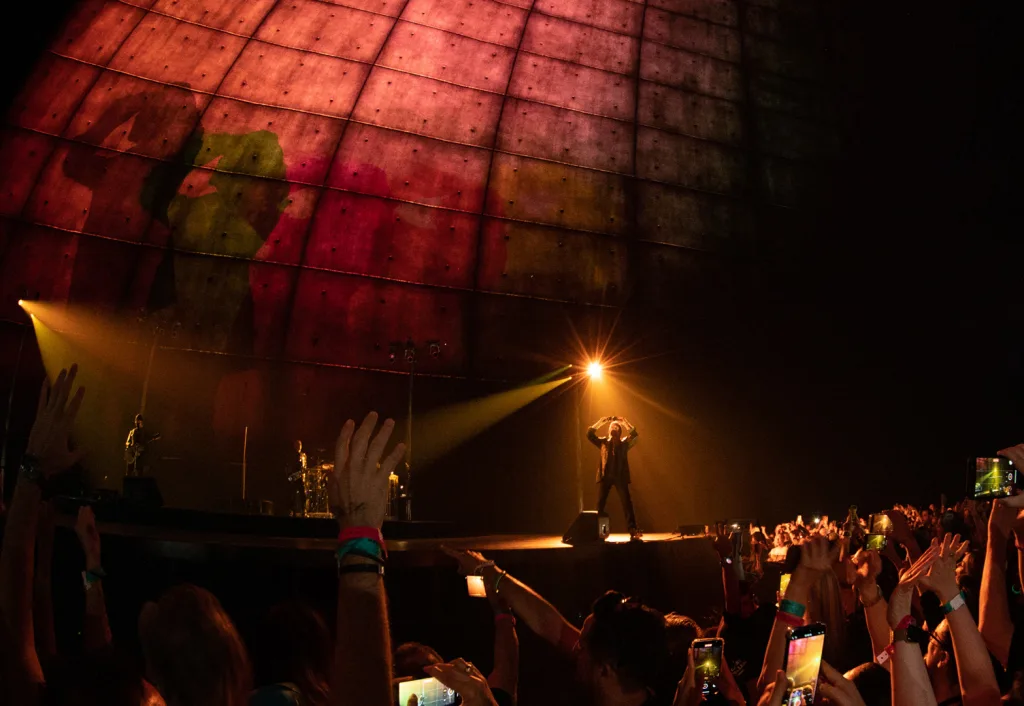
During each show, an average of about 402 gigabytes per second are flowing to Sphere’s massive screen and to 164,000 audio channels in parallel. “There will be concerts before U2, and there will be concerts after U2,” Martin says, but this one “will be the new benchmark.”
Depending on where you’re sitting, taking it all in is near impossible. It’s best not to even try. I just rolled with it, starting with the jackhammer drumbeat and crunching guitars of set opener “Zoo Station,” when there’s an illusion of light beginning to pulsate and seep into the sphere. As you’re glancing from the band to the screen, trying to decide where to direct your attention, they briefly solve the problem for you and beam incredible images of the musicians up to the screen, tucked inside a cross of light.
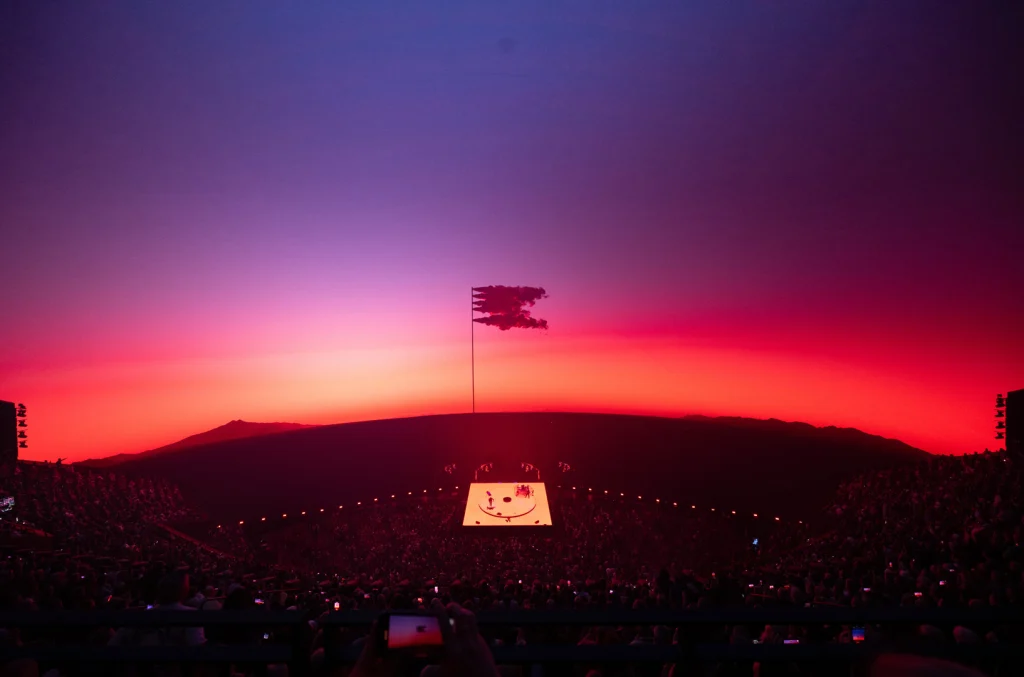
Smasher told me the hardest part of the whole show was striking a balance between impressing concertgoers with spectacular visuals, but not to the point that they forget there’s a band down there. There will be times, though, that you’ll definitely forget, like during “Where the Streets Have No Name.” With this residency, U2 has given their fans a sunrise that might be even better than the real thing.
Recognize your brand’s excellence by applying to this year’s Brands That Matter Awards before the early-rate deadline, May 3.
